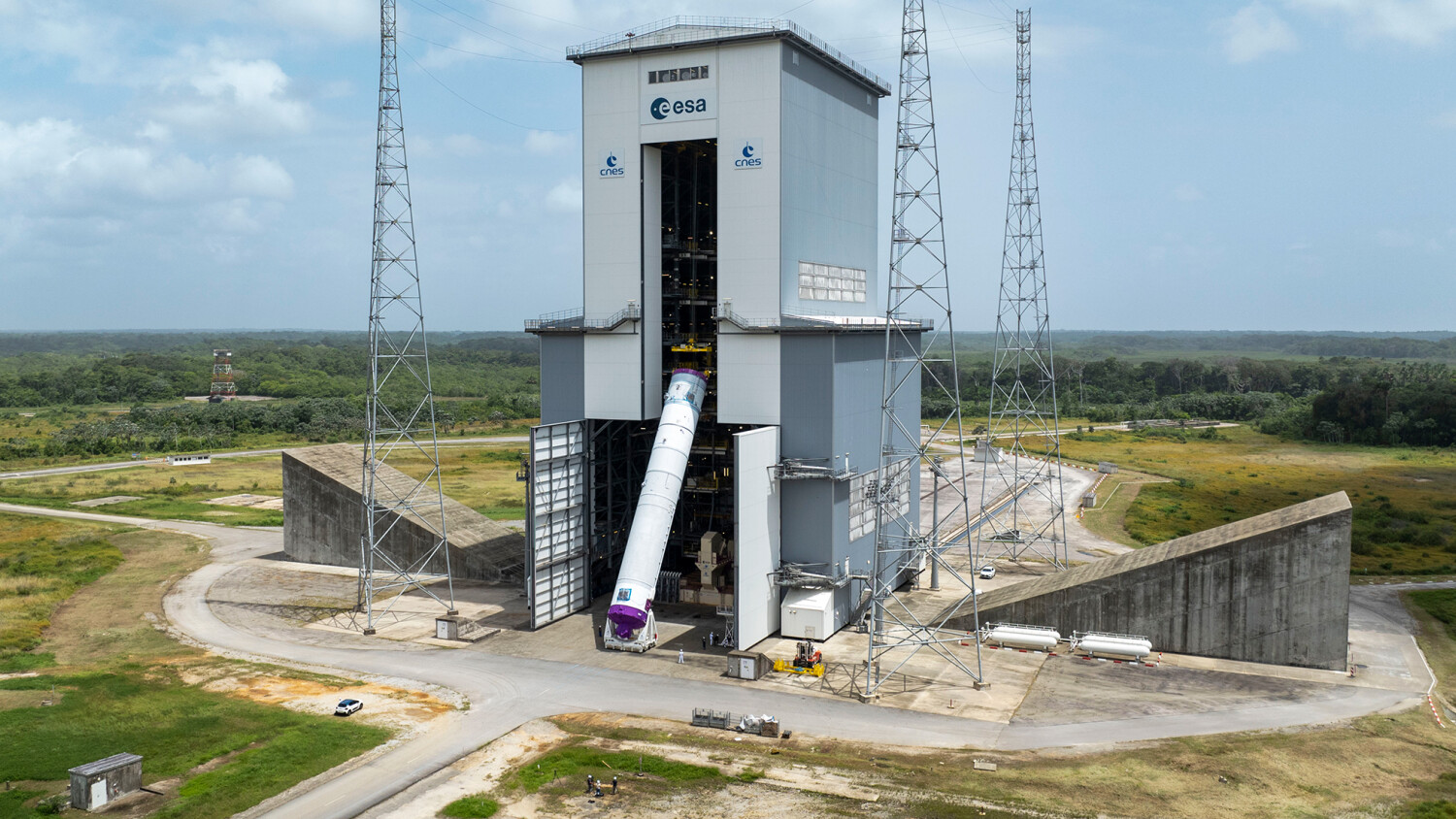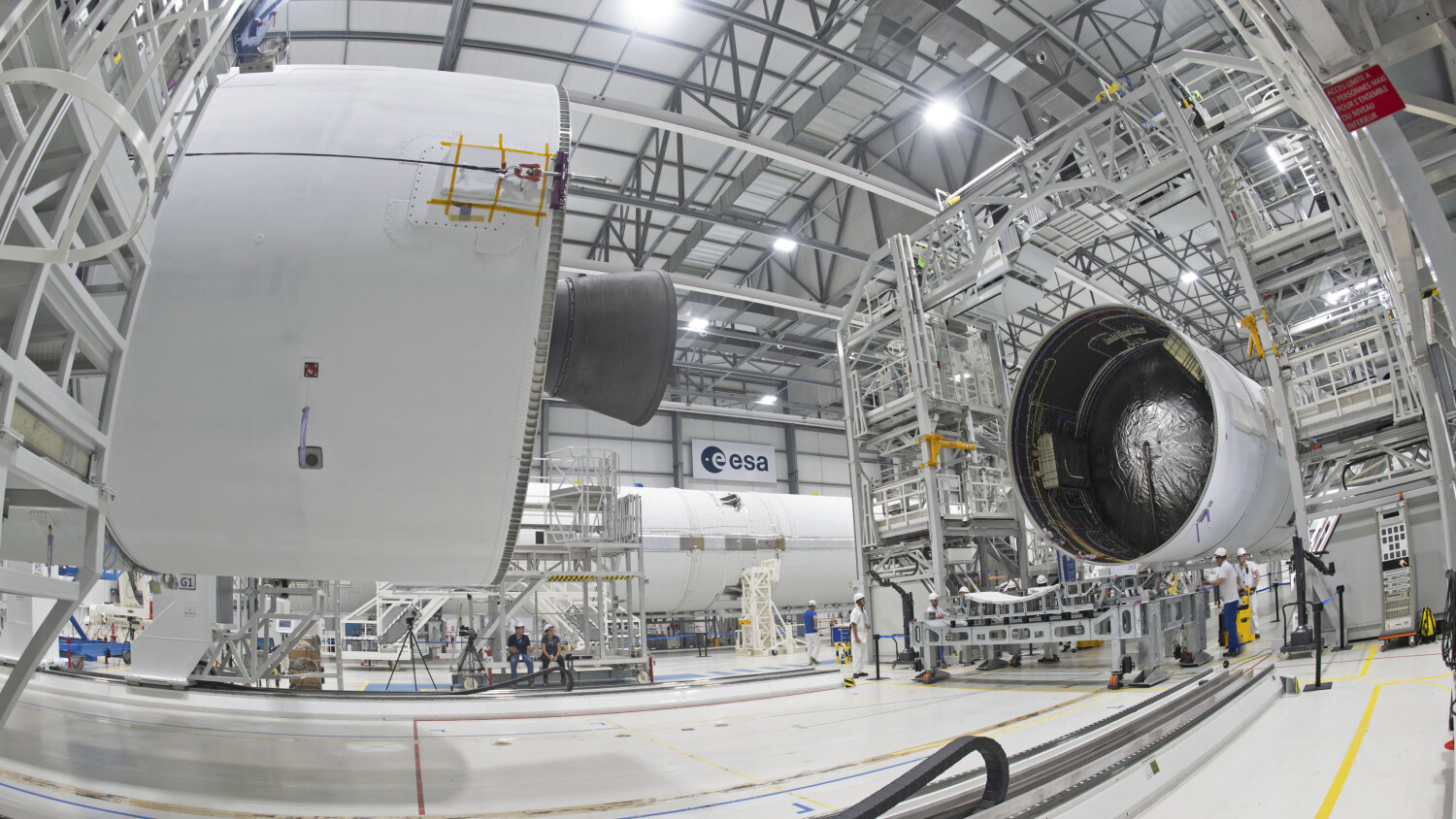- On October 6, Arianespace will launch two Earth observation satellites, THEOS-2 (Thailand Earth Observation System-2), manufactured by Airbus Defence and Space for the Geo-Informatics and Space Technology Development Agency (GISTDA), and FORMOSAT-7R/TRITON for Taiwan Space Agency (TASA).
- Flight VV23 will also embark ten auxiliary payloads.
- For this mission, the Vega launcher will target a sun-synchronous orbit.
Arianespace’s next mission is targeted on Friday, October 6, 2023 at 10:36 p.m. local time (October 7, at 01:36 a.m. UTC), from Europe’s Spaceport in French Guiana with a Vega launcher. The mission, called VV23, will place its passengers into sun-synchronous orbit.
This mission will embark a main passenger, THEOS-2, and a secondary one, FORMOSAT-7R/TRITON:
THEOS-2 is a high-resolution Earth observation optical satellite, part of the next-generation national geo-information system provided by Airbus Defence and Space to support the Kingdom of Thailand’s key development priorities. Delivering 0.5-meter ground resolution imagery, this end to end system will complement THEOS-1, launched in 2008 for Thailand, one of the few nations in the world able to fully exploit geo-information for societal benefits.
FORMOSAT-7R/TRITON, developed by the Taiwanese Space Agency (TASA), is equipped with the Global Navigation Satellite System-Reflectometry (GNSS-R), which collects signals that bounce off the sea surface. It helps scientists calculate the wind field over the oceans. This data will be shared with the global meteorology community, contributing to the forecast of typhoon intensity and trajectory.
The 21st mission of Europe’s Vega light launcher will also orbit ten auxiliary payloads for six different clients:
ANSER (Advanced Nanosatellite Systems for Earth observation Research) LEADER, ANSER FOLLOWER 1 and ANSER FOLLOWER 2. This cluster of three cubestats working together to study and monitor the quality of inland (reservoirs) water over Iberian Peninsula is led by the Instituto Nacional de Tecnica Aerospacial. The launch services is funded by the IOD/IOV program of the European Union.
ESTCube-2, manufactured by the University of Tartu (Estonia), aims to demonstrate deorbiting with plasma brake technology and qualify a deep-space nanospacecraft platform for future missions that will use the electric solar wind sail. The launch services for this mission is funded by the IOD/IOV program of the European Union.
N3SS (Nanosat 3U pour la Surveillance du Spectre) project is a demonstration system for detecting and localize radio-frequency jammers. CNES is responsible for the system and satellite development and also in charge of the in-flight operations of the satellite. U-Space is the prime contractor for the platform development and the satellite AIT/AIV.
PRETTY (Passive REflecTomeTry and dosimetrY) and MACSAT that will be launched on behalf of SAB-LS. The first one is a 3U cubesat with a primary payload equipped with a passive reflectometer in the L5 Band for GPS and Galileo; and the second one is an in-orbit demonstration (IoD) mission to demonstrate IoT (Internet of things) communication over 5G.
PVCC (Proba-V Companion Cubesat), a 12U cubesat aiming at testing the performance of the payload on a cubesat platform in order to provide data to support the calibration of cubesat Earth observation missions. PVCC is an ESA mission lead by ESA/TEC for the design, launch and commissioning phases and by ESA/ESRIN and ESA/REDU for the operational and end-of-life phases.
CSC-1 & 2, two 6UXL multi-payload IOD cubesats aggregating 7 payloads from 5 countries: Belgium, Spain, Estonia, France and Czechia. They are part of the European Union IOD/IOV program for which ISISPACE/ISL is responsible for the mission implementation.
These small satellites will be carried as auxiliary payloads on the innovative Small Spacecraft Mission Service (SSMS) deployment system. The SSMS rideshare service, developed with the support of the European space industry, was first deployed by Arianespace in September 2020. Funded by the European Space Agency (ESA), Arianespace’s SSMS service will soon be joined by the Multiple Launch Service (MLS), a similar offering designed for the Ariane 6 launch vehicle. With these two services, Arianespace can offer a wide range of affordable launch opportunities for small satellites and constellations.
Ten European countries contribute to Vega, which was developed by ESA, with the Italian Space Agency ASI as lead contributor and Avio (based in Colleferro, Italy) as the launcher prime contractor. Avio is in charge of all industrial operations up to liftoff. Vega has been part of the Arianespace launcher family since its first flight in 2012.


- Press release











